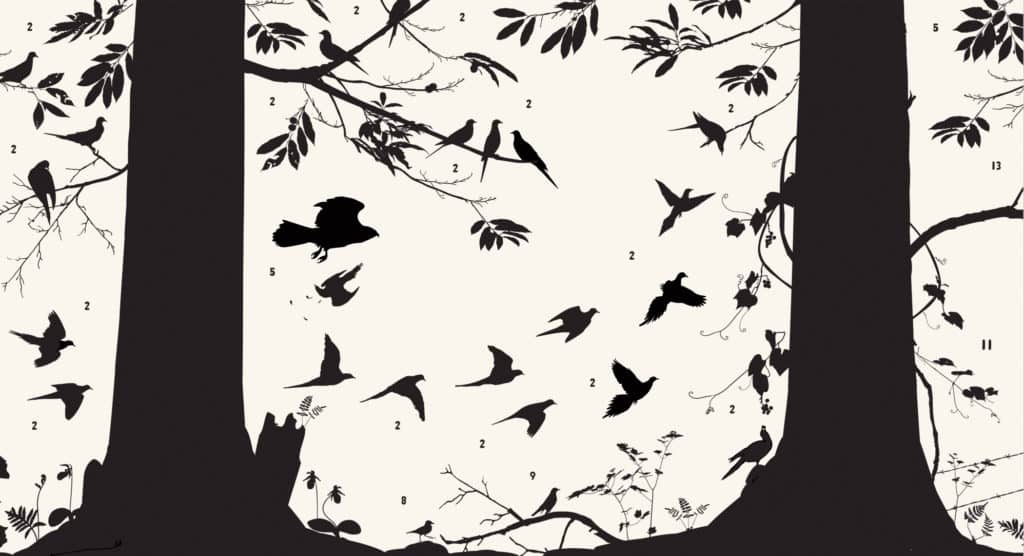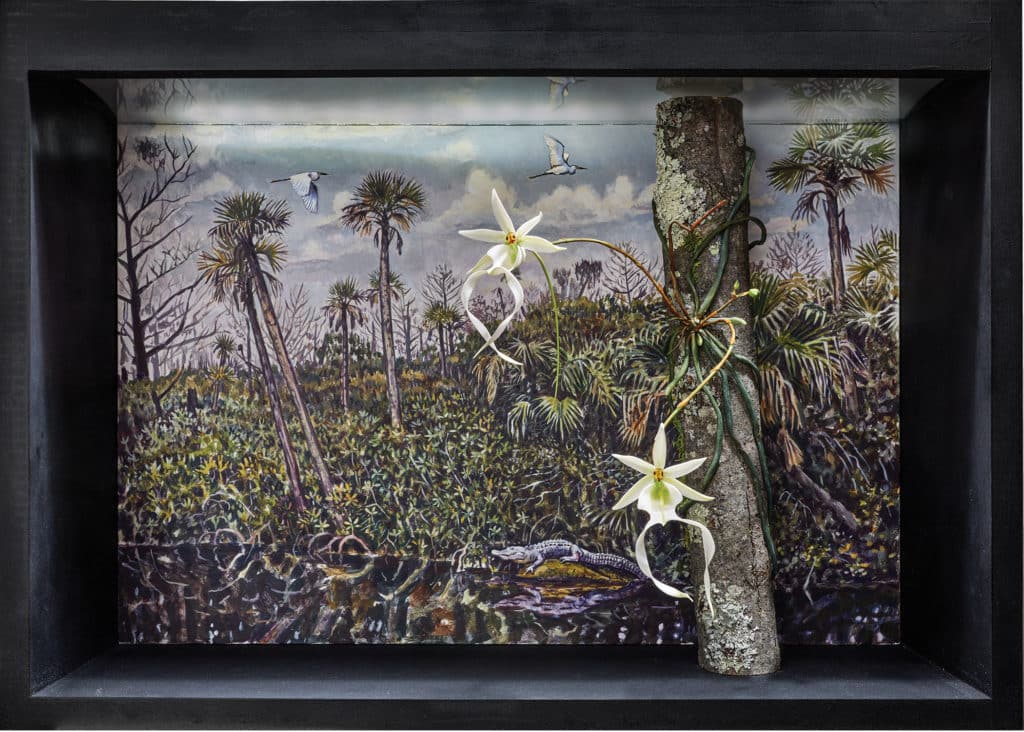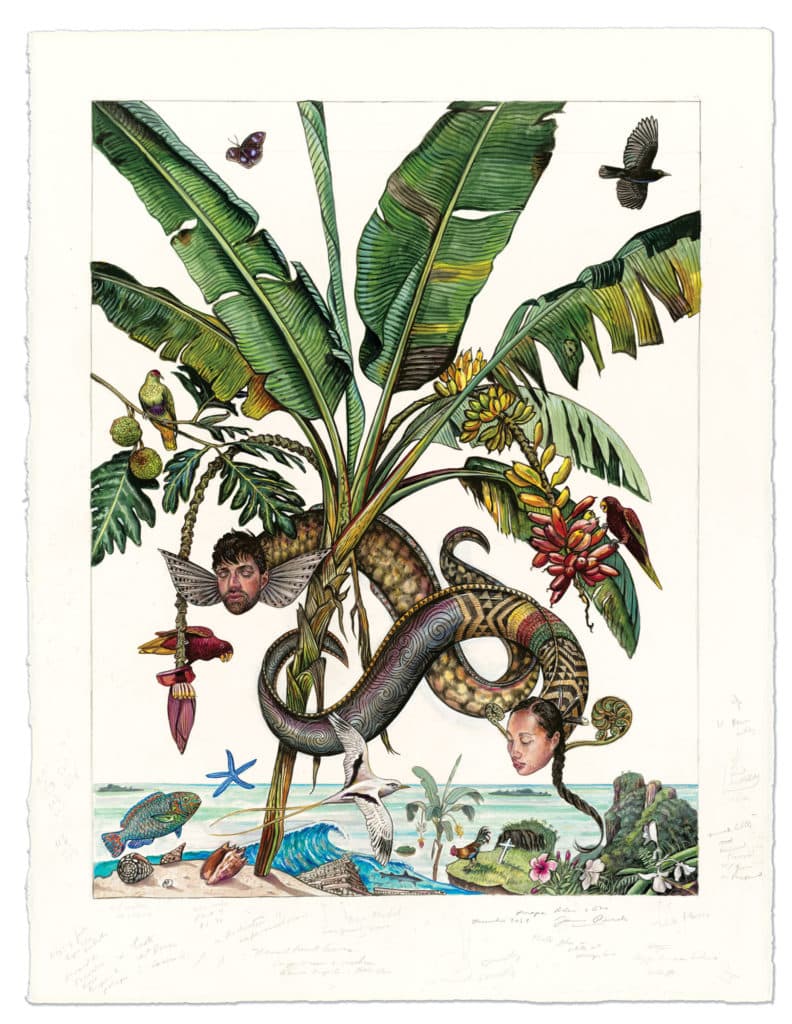Naming Nature

As an undergraduate at Yale University in the 1990s, I read the seventeenth-century English poet John Milton’s Paradise Lost for the first time. This passage caught my attention:
There was a place,
Now not, though Sin, not Time, first wrought the change,
Where TIGRIS at the foot of Paradise
Into a Gulf shot underground, till part
Rose up a fountain by the Tree of Life
If the Tigris River bubbled forth from the ground near the Tree of Life in the Garden of Eden, I reasoned, then it was undoubtedly cold, and most likely there were trout living there. Those trout were descendants of the ones that witnessed man’s fall from Paradise. I dreamed of going there to catch the trout of Eden.
After graduation, in the summer of 1997, I set off with a friend from his home in southern Austria to southeast Turkey—through Italy, Macedonia, and Greece, by car and by ferry and on foot—to the source of the Tigris River, to look for trout where Eden was said to have been. This trip married two obsessions of mine: trout fishing (and painting trout in watercolors) and the biblical story of the Garden of Eden (and accompanying concerns regarding the naming of life by Adam).
Not more than a day’s drive from Mount Ararat on the Armenian border (where Noah is said to have landed the ark in the flood) and south of blue Lake Van, we found several small tributaries on the map that looked promising.
But as we got closer to the Iraqi border where these small streams flowed, we realized the region was too politically turbulent to travel precisely where we wanted to go. Less than 20 miles from the border with Iraq, with the Turkish military actively fighting the Kurdish separatists, we gave up our search and turned around.
My love of trout and of drawing them first led me to my inquiry about naming life and the relationship between word and world. Unable to find a book on the trout of North America as a child, I set out to make one at the age of nine, influenced by the bird paintings of John James Audubon and Louis Agassiz Fuertes. I wrote to departments of wildlife around the country, asking what kind of trout lived in their streams. I received very nice responses from biologists who studied these fish in cold streams and lakes in places such as California, Colorado, Maine, and Nevada. They sent me photographs, papers they had published, and occasionally an invitation to visit. I began to make a list of all the different types of trout of North America, but I learned very quickly that no two biologists could agree on how many trout there were. Not only could they not agree on how many species existed in North America, they also could not agree on what a species even was.
This was because, as I was learning, language was a tool we used to navigate the world but was not the world itself.
I learned very quickly that no two biologists could agree on how many trout there were. Not only could they not agree on how many species existed in North America, they also could not agree on what a species even was.
In my youth, I learned to identify things using field guides, in which a picture of a bird or an insect corresponds to a name on the facing page. I had assumed that these books contained the last word, that the names for every organism had been agreed upon by figures of authority. My early research on trout had shaken these assumptions, and I began to lose faith in order and the reliability of names to describe the immense complexity of Earth’s biodiversity.
So, what did this say about God’s first task for Adam—to name the animals in the Garden of Eden? Was it a fool’s errand?
In the beginning of Genesis, God makes things by drawing lines—separating the once-holistic universe into pieces. He divides light from dark, land from water. He gives names to entities that did not exist before—day, night, Heaven, Earth. He creates whales from the water, birds from the sky, and Adam, the first human, from the soil. God makes companions for Adam from the ground, beasts and fowl of all kinds, and then brings “them unto Adam to see what he would call them” (Gen. 2:19). Thus, the first human becomes a creator in his own right—naming things into being. But what might we have lost in the process?
The author Ursula K. Le Guin asks this question in her one-page story “She Unnames Them,” originally published in the New Yorker in 1985. In it, Eve apparently senses that once Adam put names on the animals, her relationship to them, and theirs to one another, changes; some ineffable and sensual closeness has vanished. So, she goes through the garden unnaming them. Le Guin writes, in the voice of Eve, that once the animals had parted with their “appellations,” “they seemed far closer than when their names stood between myself and them like a clear barrier: so close that my fear of them and their fear of me became one same fear.” Upon completing her task, Eve hands her own name back to Adam and walks out of the garden in protest.

I first traveled to Pohnpei, a tiny island in Micronesia (only 13 miles in diameter), in March 2008, to write about a clan of people called the Lasialap, for whom the eel is a totem. Members of the eel clan consider eels to be their human ancestors and therefore do not eat them. In the Lasialap reality, humans can seamlessly transform into eels and back into humans, sometimes becoming a hybrid version of both at once.
I learned on this first trip to Pohnpei that the people have many fascinating customs related to naming, particularly the naming of plants, so I returned several years later to conduct research for a book about naming and ordering nature. Names are a source of power in Pohnpei. Medicine men and women are able to activate and harness the healing powers of a plant by uttering special names that only they know. Parents do not speak their children’s given names until they reach two years of age, for fear that an evil spirit will mimic the name, luring the child into the forest to be killed. In all aspects of life, names are used carefully. The Pohnpeian origin story of how people received the names of plants and animals is very different from, even antithetical to, the biblical one.
In one story, we tell nature what it is to be called, bringing all our preconceptions and prejudices to the process; in the other, nature tells us, and we listen.
Unlike in the biblical story, in which God gives Adam the task of putting names on the animals, in the Pohnpeian story two boys go out into the forest and ask the plants what their names are. In one story, we tell nature what it is to be called, bringing all our preconceptions and prejudices to the process; in the other, nature tells us, and we listen.
Of course, in practice, the Pohnpeian approach to gathering words—you cannot really even call it naming, it is more learning by imitation—is impractical for the purposes of cataloguing all the life on Earth, but there is metaphorical wisdom embedded in it. This sympathetic approach is consistent among peoples who have needed to maintain a level of intimacy with nature to survive. When I was a child, I knew the trout in my local stream not as members of a species but as individuals—some I had caught and released several times and could recognize based on their unique spotting patterns (visual identifiers—a kind of name—but in an idiom that was not mine). I was not using my learned language as a medium through which to traverse the land; I was using my senses to make direct observations, to melt into the forest and the stream. Names have not helped me achieve my most intimate moments with nature—wordlessness has.

For people who name nature for a living—called taxonomists (one could argue that Adam was the first)—the holy grail is discovering and naming a new species. There is, of course, an element of possession and control in the naming process. In a sense, we express a kind of ownership of our children and pets when we give them names. According to James C. Scott in his Seeing Like a State (Yale University Press, 1999), the creation of standardized surnames for members of a population by modern states was a method of fixing their identities, making them “legible” for “the purposes of taxes, forced labor, and conscription.” Traditionally, by the International Codes of Botanical and Zoological Nomenclature, to name a new species you must “collect” a specimen—that is, take a life—perhaps the ultimate form of possession. Some people have suggested that even giving something a name, without literally killing it, is a kind of metaphorical death, a negation of the thing being named.
The novelist and poet Vladimir Nabokov was an intense amateur lepidopterist and corresponded with the curator of the insect collection at the Yale Peabody Museum of Natural History, Charles Remington, in the 1940s. His poem “On Discovering a Butterfly,” published in the New Yorker in 1943, recounts that his greatest joy, and highest accomplishment, was to find and name a new species of butterfly: “I found it and I named it, being versed / in taxonomic Latin; thus became / godfather to an insect and its first / describer—and I want no other fame.”
To receive a name, an unnamed creature may have to die, but as long as there are humans to use the name and hold it in their imaginations, it will, in a sense, live forever.

In all these stories of naming, something is gained and something is lost. This is the nature of the world; the tensions that propel experience and narrative exist on the boundary lines—between land and sea, youth and adulthood, innocence and experience, life and death, knowing and not knowing.
In stories the world over, the creature that seems to most frequently aid this transition, the trespass, the crossing, is the serpent—a lithe creature that lives in several worlds and none, and a hybrid of them all. It is a creature that is hard to name or classify in our minds, and perhaps this is why it serves this role. It moves, but without the aid of limbs. It inspires fear and awe and reverence, universally.
The creature that seems to most frequently aid this transition, the trespass, the crossing, is the serpent—a lithe creature that lives in several worlds and none, and a hybrid of them all.
One way that humans are able to transcend the boxes implied by names is through metaphor, and the telling of stories in which the lives and fates of animals and humans are intertwined. The narrative of Adam and Eve, with the serpent who seduces Eve into eating from the Tree of Knowledge (leading to her and Adam’s banishment from Eden), shares a common history with origin myths from India and Indonesia, in which the snake plays the role of monster-seducer or guardian. As people migrated from the mainland into the more remote islands of the Pacific, they brought their stories with them. In much of Polynesia and Micronesia, there are no native snakes, and so the eel (a fish) assumes the role of the serpent as the closest available counterpart. In many versions of a similar story, differing slightly from island to island, the eel is involved in the creation of the most important food plant, which regionally can be the coconut or, in the case of Pohnpei, the breadfruit or banana. These stories most often involve a young girl who goes to the spring hole to get water. When she returns to the village, she realizes that there is a young eel in her vessel of water, and she takes it home as a pet. As she raises the eel and it grows bigger, her parents become afraid of it, and eventually they release it back into the freshwater spring where she found it. As the girl and the eel grow and mature, they develop an affection for one another, and one day, when the girl is washing clothes in the freshwater spring, the eel comes up, wraps its tail around her leg, and violates her. The local warriors in the village run down to the spring, capture the eel, and cut off its head. The girl is conflicted because she loves the eel but does not know how to process what happened. Just before the eel dies, it asks the girl to bury its head in the sand and watch what grows. The girl follows the eel’s instructions, and from the spot grows the first coconut tree and, eventually, the fruit—a source of both food and water. The “eyes” of the coconut are said to be the eyes of the eel, and when the girl drinks from the coconut, she is kissing the eel.
In each story—biblical and Indigenous Pacific Island—the snake or snakelike creature gives something in the course of its seduction. Both stories involve fruit trees and a serpent as metaphorical deliverer of sexuality and sustenance (mental sustenance, i.e., knowledge, and/or corporeal sustenance, i.e., food). In both, the journey to the gift is fraught, it is complicated, it is messy, and it involves relationships where the boundaries of cordiality and respect are somehow crossed. Perhaps it is only through conflict, and crossing lines, through the breaking of what once was whole and sacred, that anything of substance can be born. Nothing is created from stasis.
Header image: James Prosek, “Bird Spectrum,” 2019. Bird specimens. Courtesy the artist. © James Prosek. Photo: Christopher Gardner.
